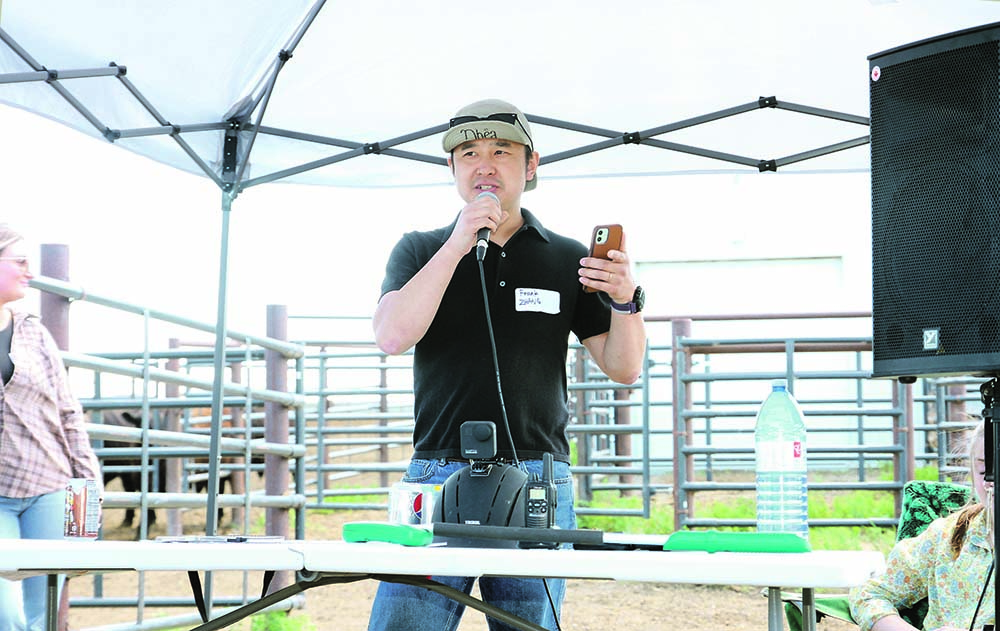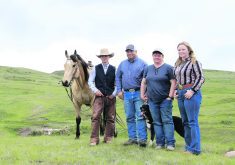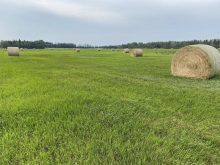Fall-seeded crop is good at making the most of seasonal moisture and then leaves the field available for planting barley
Livestock producers chasing moisture for their forage crops could benefit from taking a look at hybrid fall rye, according to researchers at the University of Saskatchewan.
“It seems to me that we are seeing different weather patterns,” said Greg Penner. “I can’t say they’re predictable, but in some years we get a fall moisture event and a spring moisture event and these come at a time where a winter cereal might be able to take advantage of it.”
Penner was presenting preliminary results of a study conducted with doctoral student Frank Zhang looking at hybrid fall rye as silage during the Livestock and Forage Centre of Excellence Field Day on June 20. The LFCE is a research unit of the U of S located southeast of Saskatoon.
Read Also

Beef cattle more prone to trace mineral deficiencies
The trace mineral status of our cows and calves is a significant challenge for western Canadian producers and veterinarians.
The team got the hybrid rye (KWF Progas) into the ground relatively early, by mid-August, to maximize forage production. This step was guided by work from forage crop researcher Vern Baron at Agriculture Canada’s Lacombe, Alta., research centre, which showed seeding a couple of weeks early increases winter survival and spring yield. They compared performance with spring-seeded barley (CDC Maverick).
“We only have preliminary results from the field so far but when we harvested that hybrid rye at a late milk, early dough range, we were having yields that were similar or at least numerically higher than we were seeing for spring-seeded barley,” Penner said.
For practical purposes, this means no yield penalty with the fall rye, plus leaving the field open for a potential second crop.
The fall rye and barley had very different chemical compositions when going into the bag because the barley was taken off at the soft dough stage, making it higher in starch rather than sugars. Once there, though, Penner said they both performed equally well with “very good fermentation profiles.”
Most of the first batch of forage in Penner and Zhang’s two-year study has been fed out with the second starting to come off the field in the third week of June.
Zhang said that there is plentiful information on backgrounding and finishing beef cattle with barley grain and silage, but there is little data for rye. He shared preliminary results for backgrounding 192 steers in 16 pens at the LFCE for 84 days.
The steers had an average starting weight of 326 kilograms. They were fed four formulations of barley and rye silage including 100 percent barley, one-third rye, two-thirds rye and 100 percent hybrid rye. Those on conventional barley silage finished the trial at an average weight of 451 kilograms, while those on 100 percent fall rye silage finished at 429 kilograms.
This slight barley advantage was also reflected in how much the steers ate, with the pure barley silage coming in at 8.4 kg per day and the pure rye at 8.28 kg. Feed conversion numbers were even closer.
“So, looking at the feed conversion, gain to feed, it was 1.17 for barley silage diet, decreasing to 1.15 for the 100 percent hybrid rye silage diet,” Zhang said.
Penner said that although the energy in both barley and rye silage wasn’t that different, the cattle seemed to prefer barley.
“There’s something about rye that cattle choose to eat less, but we’re not really sure what that is.”
While Zhang and Penner didn’t look at ergot contamination, for which rye is well known, the arrival of hybrid fall rye varieties with shorter pollination windows has reduced the risk. Penner said that while they didn’t test the hybrid rye silage for ergot, contamination is pretty easy to spot and none was detected. Similar studies support this.
While hybrid rye carries less risk for ergot infection, Cordon Geisam said best practices must be used to avoid losing this advantage.
He explained cultural practices can better the odds against ergot and these practices are not the same as those for winter wheat. Poorly seeded rye can cause uneven germination, disrupting plant maturation. So will going into a springtime field with fertilizer and making tracks.
Geisam is a territory manager for FP Genetics, which carries several hybrid rye varieties brought in from German seed company KWS starting eight years ago. The company is also a funder of Zhang and Penner’s work, along with the Saskatchewan Agriculture Development Fund and the Saskatchewan Cattlemen’s Association.
He said one common practice is to use an auxin-based herbicide, such as MCPA or 2,4-D. For hybrid rye, these are a no-no because they disturb the anthers and stamens of the flowers, making them “five, 10, 15, 20 times more susceptible to ergot.”
“That’s what our chemical books tell us to do to take care of our broadleafs,” Geisam said. “The Germans just about lost their lederhosen. They knew this 40 years ago. You don’t do that.”
Other cultural practices are to minimize or put some distance between rye and sources of ergot spores such as wild rye grass.
“So, if you’re putting your rye field beside an open pasture, you have a higher risk,” he said. “If you have a cereal field that has big ditches and your RM doesn’t have financing and isn’t mowing the ditch before it goes to seed, your load of spores for that particular crop is potentially higher.”















